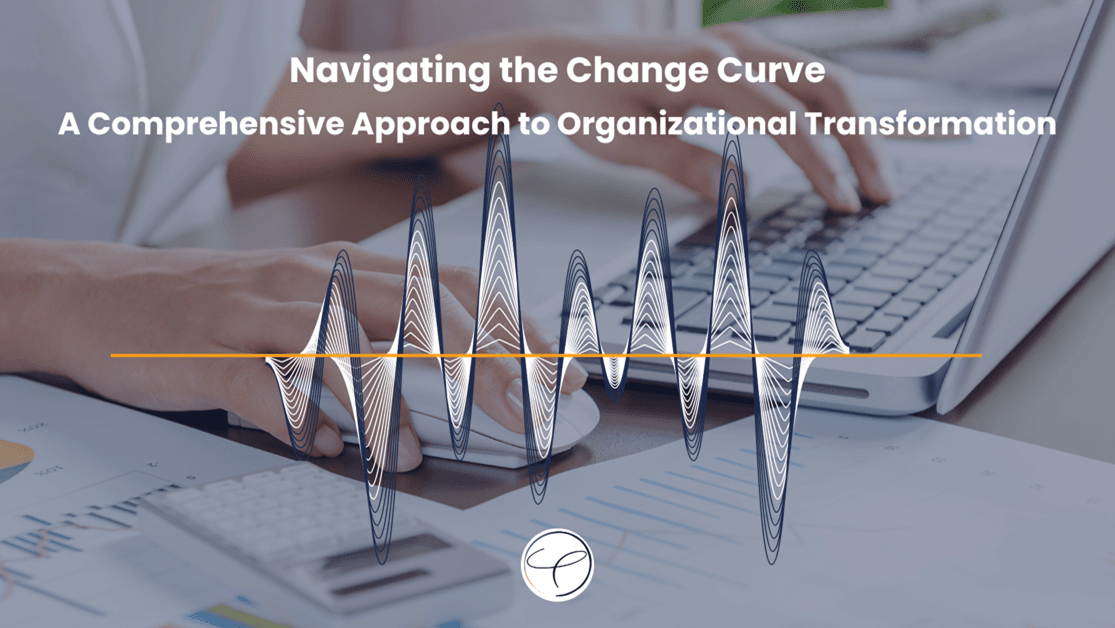

Change Management Blog
Capturing The ROI of Change Management
March 6, 2023
Time to Read: 4 Min

Capturing The ROI of Change Management
Change Management allows us to leverage and enhance the benefits of a project that hinges on user engagement. By assigning a tangible value to the contribution of the human element or in other terms by measuring the contribution of the people-side to overall project benefits, we can demonstrate the financial impact of Change Management, fostering insightful dialogue with stakeholders to secure their support and commitment and shifting our discussions with leaders from questioning the ROI of Change Management to examining how employee adoption and utilization influence the project's overall financial success.
As we reassess the financial justification for Change Management in relation to project outcomes, our discussions must evolve:
From asking, "What is the ROI of Change Management?"
To exploring, "How much of the project's ROI is contingent upon employee engagement?"
The true ROI of Change Management lies in the additional benefits a project garners through the successful adoption and use by employees. Our methodology equips us to define and communicate the measurable value that Change Management contributes to a project's success.
Evaluating ROI with consideration for Change Management
The process involves dissecting the expected benefits of a project to understand the extent to which they depend on users embracing new processes. This critical analysis recognizes that some project gains are independent of usage, while others are directly linked to how well employees adapt to change. This nuanced approach to ROI calculation highlights the value of Change Management in ensuring that a project lives up to its full potential.
To begin, let's define return on investment (ROI):

By assessing net benefits against project costs, we derive the project's ROI, a familiar metric to project and senior leaders. To refine the conversation around Change Management ROI (CMROI), we must segregate expected project benefits. Some benefits, such as reduced maintenance and license fees from a new software, accrue automatically and are adoption-independent.
These fall into the category of "Independent of adoption and usage."
To refine our understanding of ROI and move towards a conversation that evolves around Change Management ROI (CMROI), it's critical that we segregate expected project benefits. Some benefits, such as reduced maintenance and license fees from a new software, accrue automatically and are adoption-independent.
This distinction enables leaders to appreciate the essential value of Change Management initiatives and their influence on achieving the full spectrum of project benefits.
“While some benefits are realized automatically, others are directly tied to how well the new systems and processes are adopted by the workforce.”
The second set of projected benefits, "Dependent on adoption and usage," emerges when employees effectively utilize new tools, like a software program that, beyond lowering maintenance and license costs, also enhances data accuracy and efficiency when used proficiently. These benefits directly stem from the effective adoption and utilization of the system by the employees. It's these adoption-dependent benefits that Change Management aims to secure and maximize.
How to Calculate Change Management ROI
Calculating the ROI of Change Management involves assessing the extent to which project benefits—like increased performance and error reduction—are realized due to employee adoption and usage. Here’s a simplified approach to calculate Change Management ROI:
Identify Adoption-Dependent Benefits: Determine which project benefits rely on how well changes are adopted by the workforce.
Quantify Benefits: Assign monetary values to these benefits.
Calculate Net Benefits: Subtract the cost of the Change Management initiatives from the total of the adoption-dependent benefits.
Determine Change Management ROI: Divide the net benefits by the Change Management costs.
“This calculation will yield the financial return from investing in Change Management efforts.”
Takeaways on Calculating Change Management ROI
When calculating Change Management ROI, keep in mind:
Impact of Adoption Factors / Impact Correlation: The ROI from Change Management is more significant in projects where benefits are highly dependent on user adoption and usage. Factors such as the number of employees impacted, the degree of change from the current state, and the familiarity of the change all influence the level of dependency. Consider variables like the scope of work changes, geographic spread, deviation from the current state, and the nature of the change—incremental or radical.
Data Gathering / Data Collection: Begin your ROI analysis by gathering two key data from leadership:
The projected benefits of the project or initiative.
The expected benefits if no employees adopted the new system.
CMROI conversion: Now you can quantify CMROI conversion with People-side benefit contribution.
” Engaging with project and senior leaders in concrete and quantifiable discussions about the value of Change Management to obtain these figures is as crucial as the data itself, as it informs the potential impact of Change Management and highlights the importance of user adoption in realizing project benefits.”
To conceptualize the ROI of Change Management, consider it as the additional value a project gains due to effective employee adoption and utilization of new changes.
This involves:
Identifying Benefits Dependent on Change Adoption: Recognizing which project outcomes are directly linked to how well changes are embraced and utilized by staff.
Quantifying Impact: Assigning a tangible value to these adoption-dependent outcomes.
Analyzing Investment vs. Return: Comparing the costs of Change Management efforts against the additional benefits they produce.
Evaluating Overall Success: Assessing how Change Management contributes to achieving strategic objectives and improving organizational performance.
Essentially, the ROI of Change Management reflects the extent to which it enhances the effectiveness and success of a project – in readiness of the Future State - through people and process integration.
RelatedBlog Articles



